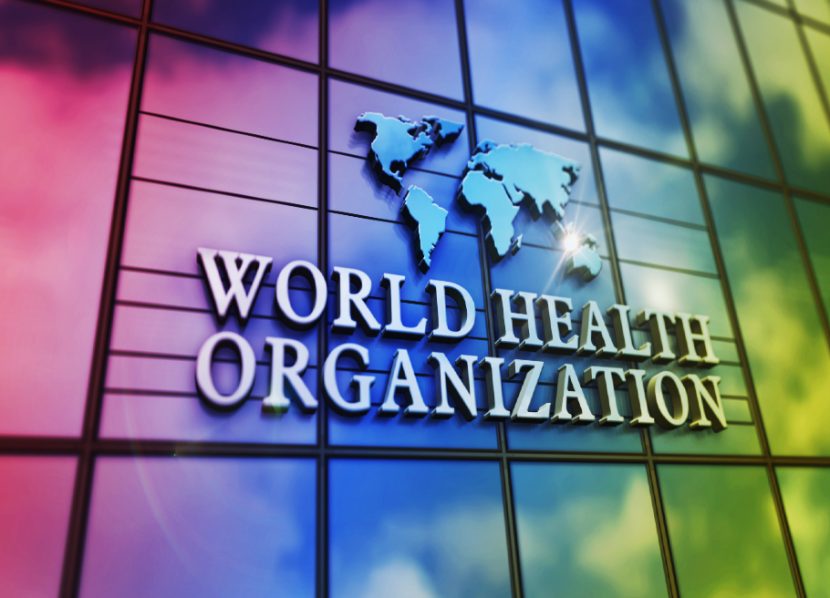In Brief: The WHO’s Global Strategy for Food Safety through 2030
By Mariella Bustamante
At the 75th Session of the World Health Assembly held in May 2022, the World Health Organization (WHO) proposed a new global strategy for food safety for the years 2022 to 2030. The strategy, which was officially launched in October 2022, is designed to tackle emerging food safety challenges and offer support to help countries strengthen their national food safety systems.
In a fact sheet on food safety, WHO states that one in ten people fall ill yearly due to foodborne illnesses. With this in mind, the strategy’s vision aims to give stakeholders the tools they need to strengthen their food safety systems and reduce food-borne diseases (FBDs) so that people everywhere can consume food that is safe and healthy.
The following summarizes the strategic priorities mentioned in WHO’s Global Strategy For Food Safety for 2022 to 2030:
Strategic Priority #1 – Strengthening national food control systems.
According to WHO, the first scope of the new strategy aims to establish national food control systems through the evaluation and improvement of key components that reduce the burden of foodborne diseases (FBD) globally. As national food control systems are important in protecting consumer health on both a global and national scale, there is a need to strengthen food safety systems and government leadership when it comes to current and future food safety challenges.
These food safety challenges include climate change, food fraud, food safety threats, urbanization, societal expectations around food, and food trends. It is left to countries to determine the best way to design their food control system and control measures. The strategy mentions the Codex Alimentarius Principles and the Guidelines for National Food Control Systems as possible sources. This priority also addresses the need for control measures to operate in a way that takes into account the culture and location involved, at a country-specific level.
One way where this is addressed is through the FAO/WHO Food Control System Assessment Tool, which was developed in 2019 and launched in 2021. When launched to a global audience in 2021, Catherine Bessy (Senior Food Safety Officer, FAO) remarked during the global launch that members from developing countries were concerned about the lack of sufficient resources allocated to food systems to function properly. Catherine added that the Food Control System Assessment Tool relies on data provided by the countries.
“A food system is much more than just controls,” she said, adding that precedence should be given to protecting the health of consumers and that this drives the effectiveness of the tool. She also noted that the tool will be developed over time to ensure that all elements (foresight approaches, performance monitoring, relationships between authorities and the private sector, etc.) are being captured in the assessment approach given by the Food Control System Assessment Tool.
Strategic Priority #2 – Identifying and responding to food safety challenges resulting from global changes and food systems transformation.
The success of a food system depends on whether population needs are met, food-wise. Ensuring a process where food is produced, distributed and sold safely can make a positive impact. The second strategic priority tackles the importance of this process, and how being able to respond to future issues is crucial.
However, food systems are complex, as they are influenced by different processes that include social and environmental factors. These include the process involved in the preparation, storage, consumption and marketing of food. The Global Strategy for Food Safety document mentions how governments need to be aware and ready for any unexpected happenings in global food safety systems. Organizations such as the WHO, the FAO, and the Codex Alimentarius assist in spreading knowledge regarding national and international changes to food safety systems, which can help to ensure that consumers are protected from emerging food safety risks.
Strategic Priority #3 – Improving the use of food chain information, scientific evidence and risk assessment in making risk management decisions.
Stakeholders in food safety make risky management decisions that can impact national food safety systems. The third strategic priority aims to improve access to information and resources to achieve integrated development and implementation of management options based on factual evidence.
This evidence-based approach can depend on scientific knowledge (hazard severity, technology, cost-effectiveness of food chain control) but as microbiological hazards can fluctuate at different steps, having direct evidence can make a positive impact on control measures. Some ways where this can be implemented involve having a risk management framework to establish food control and having information gathered that goes beyond the food chain system. For example, imported food can include data such as risk profiles by exporting country and importer declarations. Food that is produced on a domestic level can be can be improved by information that includes supplier declarations and traceability arrangements.
Sourcing food safety information beyond borders can also help, as international bodies can supplement national information sources. Well-established and trusted organizations such as FAO, WHO, WOAH can offer food safety standards to food safety system-establishing authorities. This is especially important as many countries are limited in resources when it comes to monitoring food chains for hazards. WHO developed the Global Environmental Monitoring and Assessment Programme (GEMS/ Food) to tackle this issue, by providing governments and stakeholders with information on global trends in how food is chemically contaminated and how this can affect human diets.
Finally, a transparent and consistent approach to risk management on a national level can make a big impact and increase trust in systems. Authorities can benefit by having international guidelines that can aid in transparency in the control measures they choose to implement. One form of guidelines, for example, are these materials from the Food and Agriculture Organization of the United Nations (FAO) which offers support for food safety risk managers when applying an evidence-based processes to their decisions.
Strategic Priority #4 – Strengthening stakeholder engagement and risk communication.
With the aim to foster a strong culture of food safety among stakeholders and encourage collective responsibility for food safety, the fourth strategic priority sees stakeholder engagement as a key component of success in food safety communication.
The document states that regulators, academia, governments and consumers and stakeholders all have a shared role to play in reducing food safety risks. A key challenge addressed by WHO involves looking at ways to improve food safety education. Acknowledging that social media has contributed to the spread of misinformation online, the food safety industry is not exempt from this. It states that one way where food safety communication is effective is through providing accurate information on food safety and food handling.
To improve food traceability, the FDA Food Safety Modernization Act (FSMA) was approved in 2018 to enable the FDA to shift gears from responding to foodborne illness to protecting it. Some requirements in the act include the need to establish projects with the food industry to explore methods of tracking and tracing of foods.
In November 2022, the Food and Drug Administration (FDA) released the Food Traceability Final Rule, which is a requirement for companies to establish records for designated foods (from the FDA’s food traceability list) to establish a more accurate and efficient way to trace food that may be contaminated.
This final rule is a key component of the Food and Drug Administration’s (FDA) New Era of Smarter Food Safety Blueprint, with new requirements designed to align with the best practices in the industry that cover both the domestic and international food supply chain. To implement this rule, all entities subject to the recordkeeping requirements would need to comply by January 20, 2026.
Strategic Priority #5 – Promoting food safety as an essential component in domestic, regional and international food trade.
As poor food safety standards can lead to numerous social and financial issues that can lead to the loss of life and lost income, the last strategic priority involves the need for food safety to be promoted as essential to the success of food production. WHO’s fact sheet on food safety mentions that around US$ 110 billion is “lost each year in productivity and medical expenses resulting from unsafe food in low- and middle-income countries.” The same fact sheet also notes that an estimated 600 million – almost 1 in 10 people in the world – fall ill after eating contaminated food.
An estimated 600 million – almost 1 in 10 people in the world – fall ill after eating contaminated food.
Sharing information regarding food control systems is vital, and something that is highlighted for this strategic priority. A number of strategic objectives have been proposed by WHO to address this, with these objectives including strengthening food control systems to meet international market standards, facilitating international fair trade practices, establishing safe guidelines for food, and ensuring national food safety systems are aligned with guidelines set by the Codex Alimentarius.
Ensuring that food safety systems are aligned with international recommendations can help governments have a set of standards to follow, especially when compatible with the World Trade Organization (WTO) SPS Agreements. These agreements are established by the SPS (sanitary and phytosanitary) Committee, which works to ensure that governments from developing nations are supplying consumers with food under strict health and safety regulations.
In keeping with this commitment towards supporting food safety regulations in trade, Germany’s Federal Ministry for Economic Cooperation and Development announced January 11, 2022, that it will be contributing 2.85 million euros to the Standards and Trade Development Facility (STDF) over a period of four years. Planned to last between the year 2022 to 2025, this contribution was established in order to support developing countries when it comes to meeting international agricultural and food safety standards.
“More than ever, it is time to show that WTO members help each other to fulfil their obligations, strengthen their know-how and further develop their trade capacities. Germany is pleased to see the Standards and Trade Development Facility (STDF)working fruitfully in the interest of all, enhancing everybody’s health and promoting sustainable agriculture,” said Dr. Bettina Waldmann, Germany’s Ambassador to the WTO.
The Standards and Trade Development Facility (STDF) is a global multi-stakeholder partnership to facilitate safe and inclusive trade, established by the United Nations Food and Agriculture Organization, the World Organization for Animal Health, the World Bank Group, the World Health Organization and the World Trade Organization, which is responsible for managing the partnership. The contribution is planned to improve food safety systems and reduce barriers when it comes to trade and trade costs in developing countries.
About the author:
Mariella Bustamante currently works as a digital media coordinator at Global Food Safety Resource.

-
 FeaturedRisk management
The Cost of a Breach: What a Cyberattack Could Mean for Food Safety Recalls
FeaturedRisk management
The Cost of a Breach: What a Cyberattack Could Mean for Food Safety Recalls
-
 FeaturedRisk management
Securing the Food Chain: How ISO/IEC 27001 Strengthens Cybersecurity
FeaturedRisk management
Securing the Food Chain: How ISO/IEC 27001 Strengthens Cybersecurity
-
 FeaturedRisk management
Revolutionizing Food Safety Training: Breaking Out of the “Check-the-Box” Mentality
FeaturedRisk management
Revolutionizing Food Safety Training: Breaking Out of the “Check-the-Box” Mentality
-
 GFSI Standards
GFSI 2025: Building Trust, Tech-Forward Solutions, and Global Unity in Food Safety
GFSI Standards
GFSI 2025: Building Trust, Tech-Forward Solutions, and Global Unity in Food Safety
-
 FeaturedFood Safety
Integrated Pest Management: Strategies to Protect Your Brand’s Reputation
FeaturedFood Safety
Integrated Pest Management: Strategies to Protect Your Brand’s Reputation
-
 FeaturedFood Safety Culture & Training
No Open Door Policy: Challenges That Impact Pest Control in Food Processing Plants
FeaturedFood Safety Culture & Training
No Open Door Policy: Challenges That Impact Pest Control in Food Processing Plants




